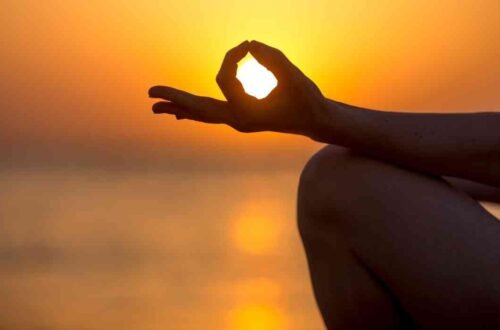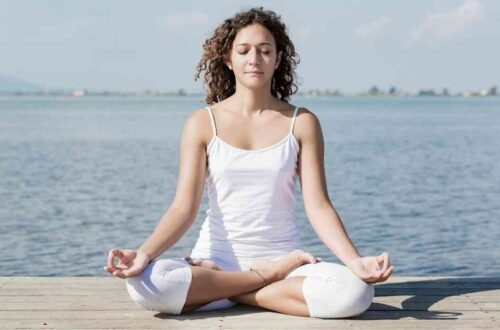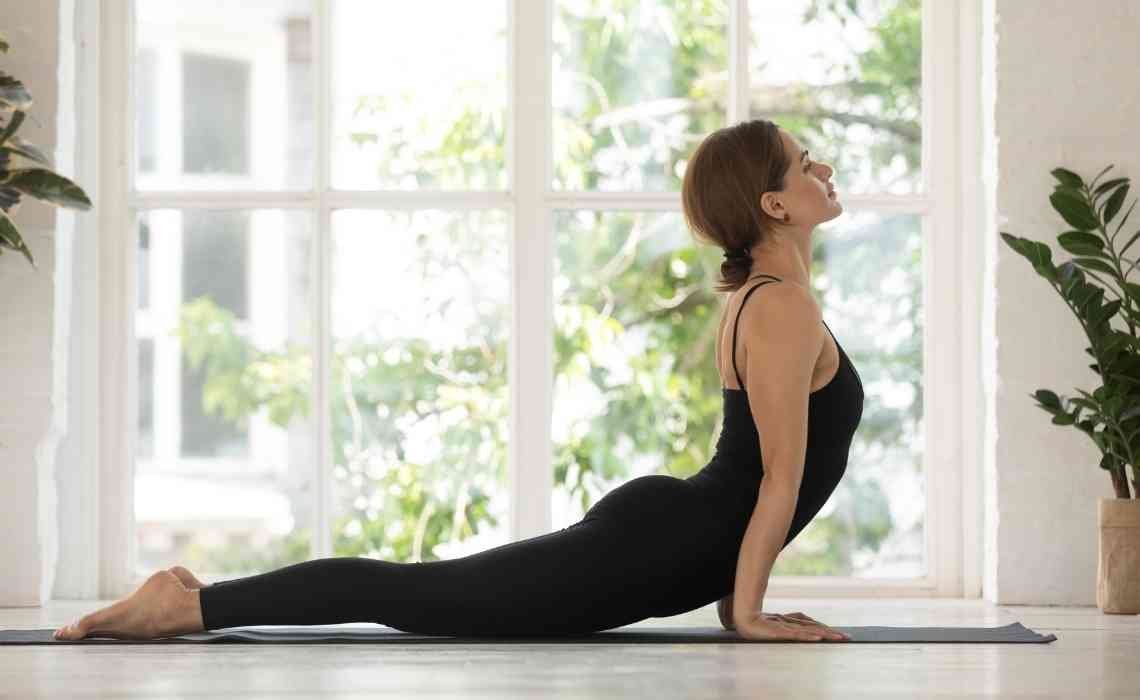
What are the 26 Yoga Poses in Bikram Yoga? Full Guide for Beginners
If you have ever heard someone talk about Bikram Yoga, you might have wondered, “What are the 26 yoga poses in Bikram Yoga?” Today, let’s walk through each of them together in a simple way. By the end, you will know what these poses are, why they matter, and how they can help your body and mind.
Bikram Yoga is a type of yoga that uses the same 26 postures in every class. These classes usually happen in a room heated to around 105 degrees Fahrenheit with high humidity. The heat helps your body stretch more easily and removes toxins through sweat. Each pose in Bikram Yoga has a purpose, and together, they help make you stronger, more flexible, and calmer.
Let’s dive into the 26 poses and explore what each one does for you!
1. Standing Deep Breathing (Pranayama Series)
This is how every Bikram Yoga class begins. You stand tall, lift your elbows high, and breathe deeply through your nose and out through your mouth. This breathing helps fill your lungs completely, warms up your body, and prepares you for the workout ahead.
2. Half Moon Pose with Hands to Feet Pose (Ardha-Chandrasana with Pada-Hastasana)
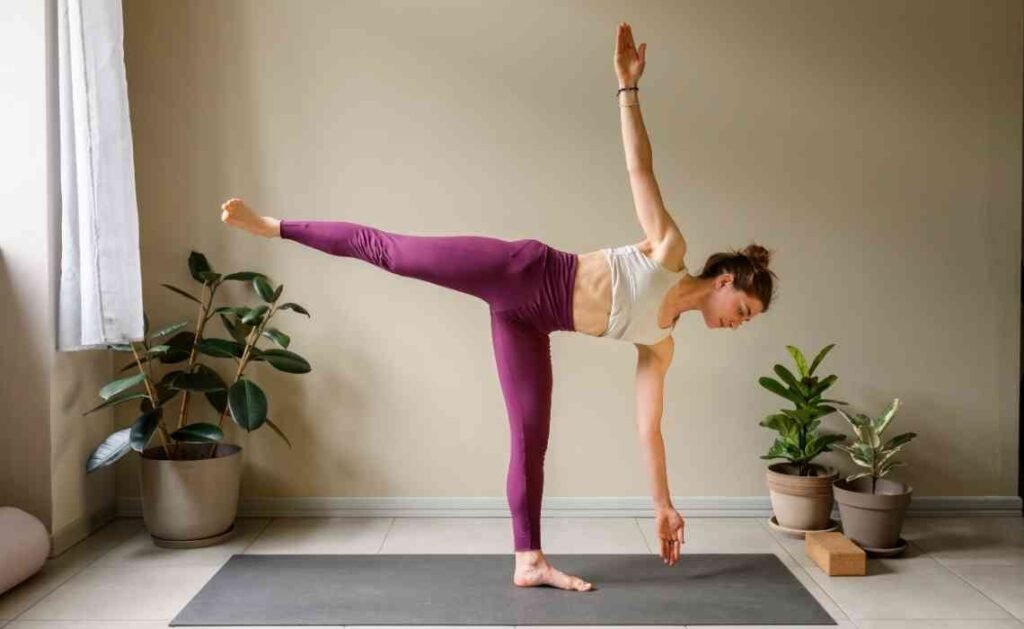
First, you stretch your body to the sides like a rainbow. Then, you fold forward and reach for your toes. This pose strengthens your legs, stretches your spine, and opens your rib cage so you can breathe better.
3. Awkward Pose (Utkatasana)

Imagine sitting down on an invisible chair. That’s exactly what you do here! This pose makes your legs, hips, and calves super strong, while also improving your balance.
4. Eagle Pose (Garurasana)
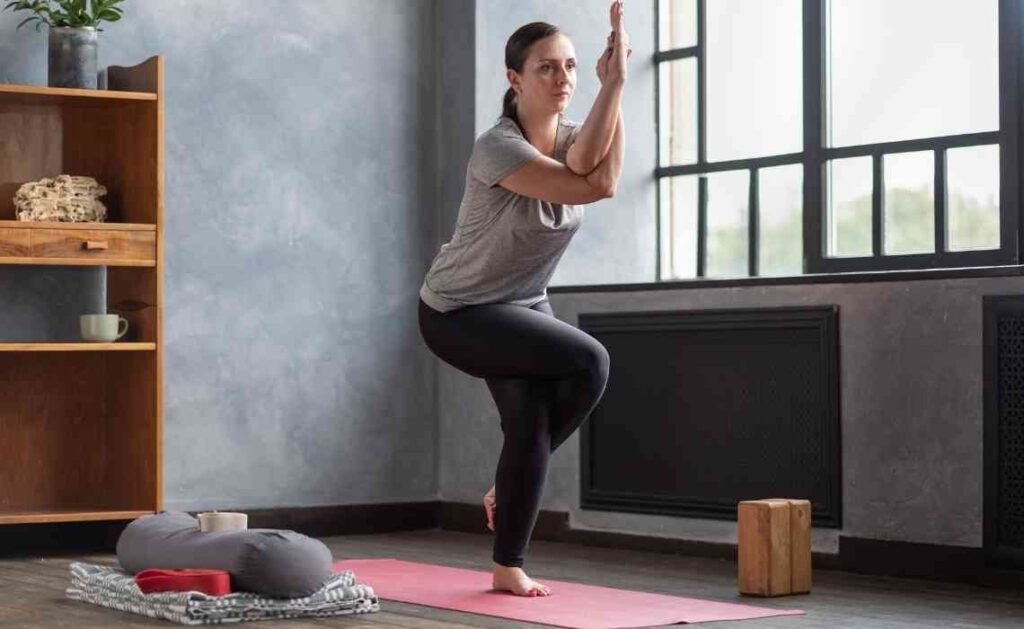
In this pose, you twist your arms and legs around each other like ropes. It might feel tricky at first, but it helps bring fresh blood to your joints and improves your focus.
5. Standing Head to Knee Pose (Dandayamana-Janushirasana)
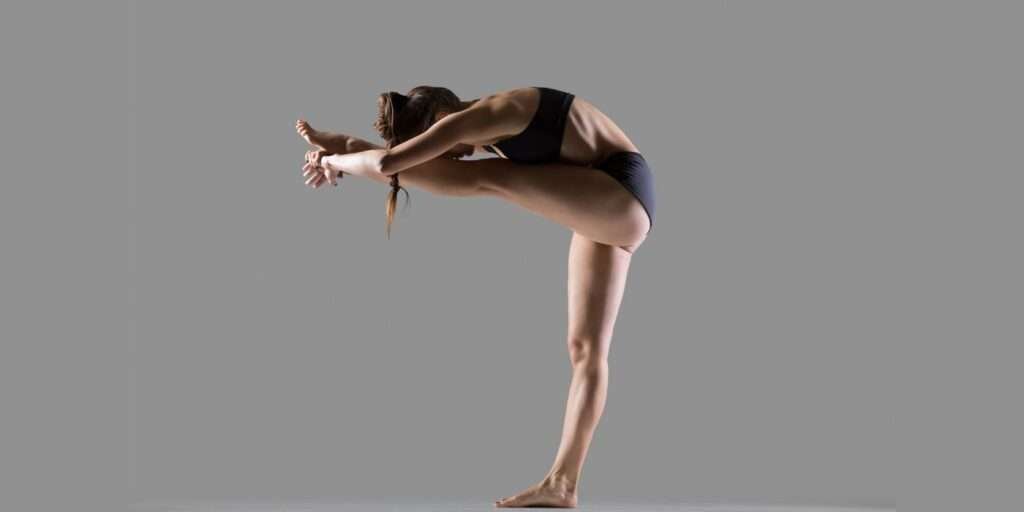
You stand on one leg, stretch the other forward, and bend down until your forehead touches your knee. It builds strength in your legs and makes your mind sharper, teaching patience and concentration.
6. Standing Bow Pulling Pose (Dandayamana-Dhanurasana)
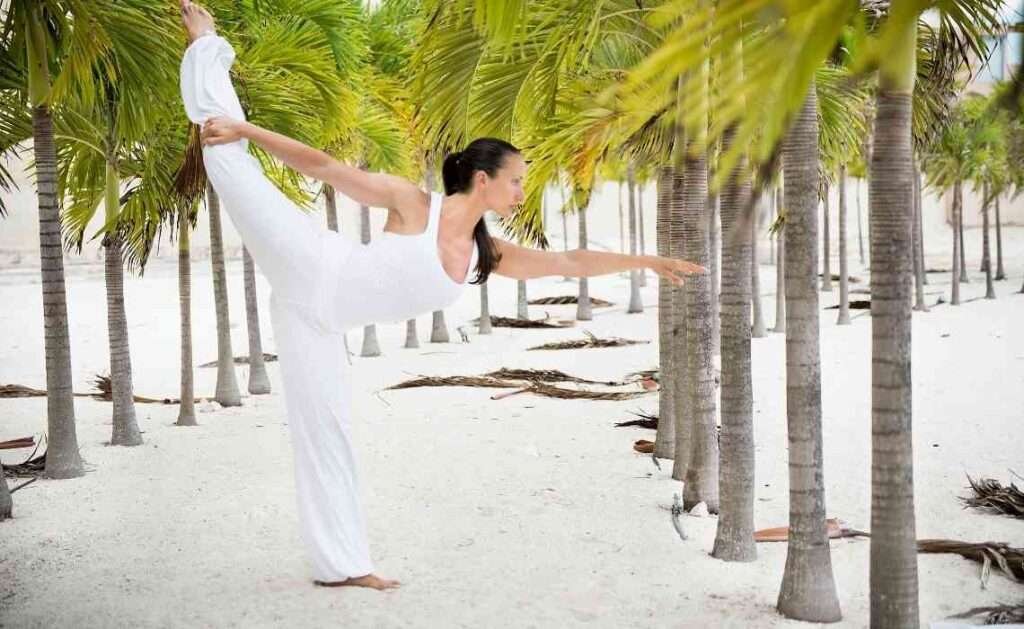
Think of this like becoming an archer. You hold one leg behind you and stretch the other arm forward. This pose boosts your balance and strengthens your spine.
7. Balancing Stick Pose (Tuladandasana)

You stretch your body into a straight line, like an airplane. This pose strengthens your heart by improving blood flow and builds stamina in your arms, legs, and core.
8. Standing Separate Leg Stretching Pose (Dandayamana-Bibhaktapada-Paschimotthanasana)
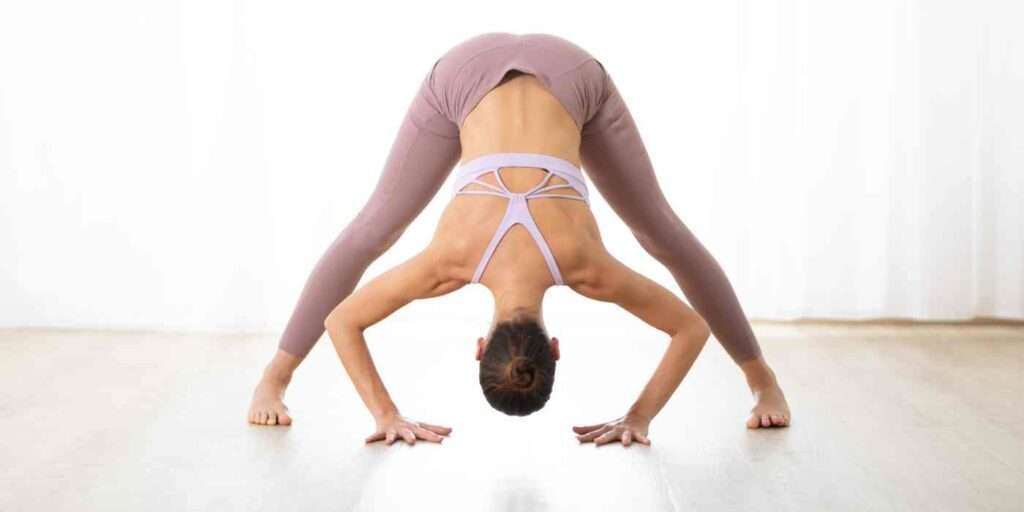
Here, you spread your legs wide apart and bend forward to touch the floor. It stretches your hamstrings and helps your internal organs work better, especially your kidneys.
9. Triangle Pose (Trikonasana)
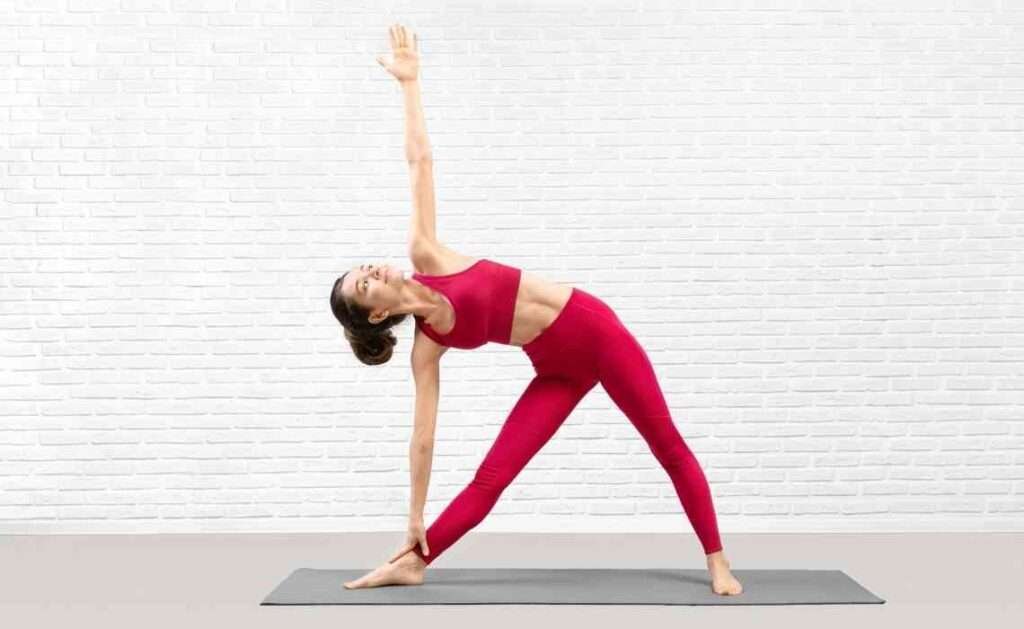
This pose looks like a triangle shape with your body. It stretches your sides, strengthens your legs, and improves your digestion. It is also great for building endurance.
10. Standing Separate Leg Head to Knee Pose (Dandayamana-Bibhaktapada-Janushirasana)
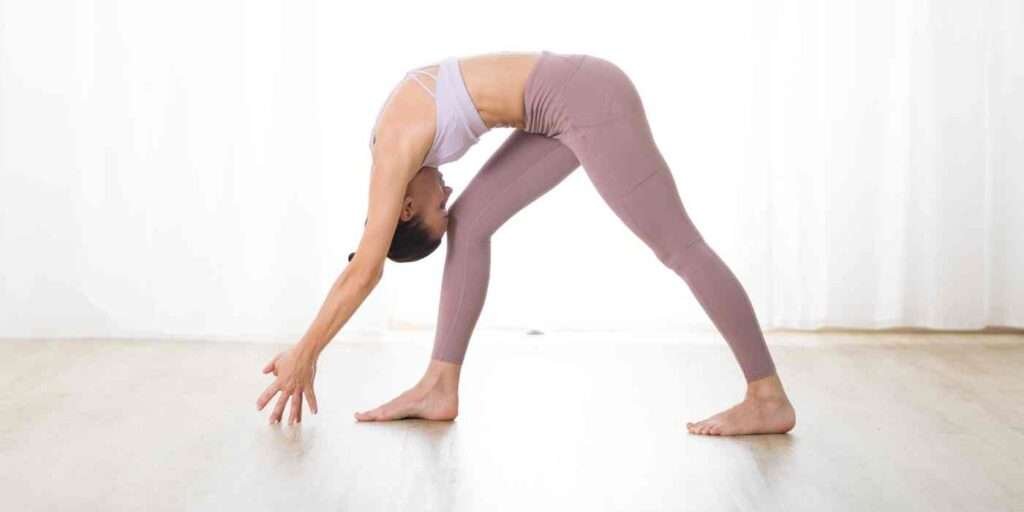
You keep your legs apart and bend forward with one knee bent slightly, touching your forehead to your knee. It helps improve metabolism and builds balance and flexibility.
11. Tree Pose (Vrikshasana)
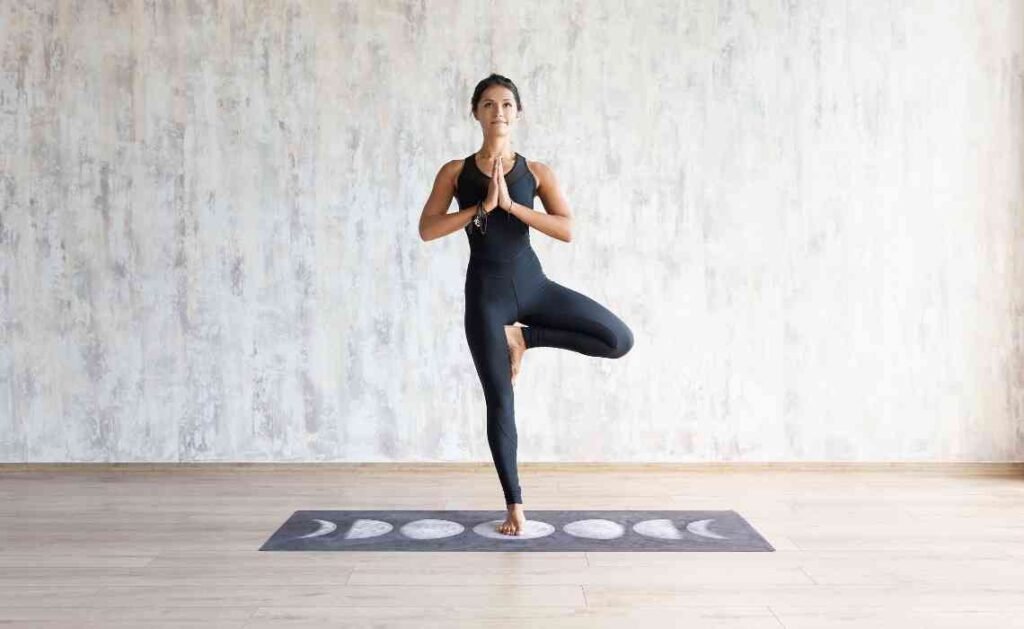
In Tree Pose, you stand tall with one foot pressed against your inner thigh and hands together in prayer. It calms your mind, improves posture, and strengthens your ankles and knees.
12. Toe Stand Pose (Padangustasana)
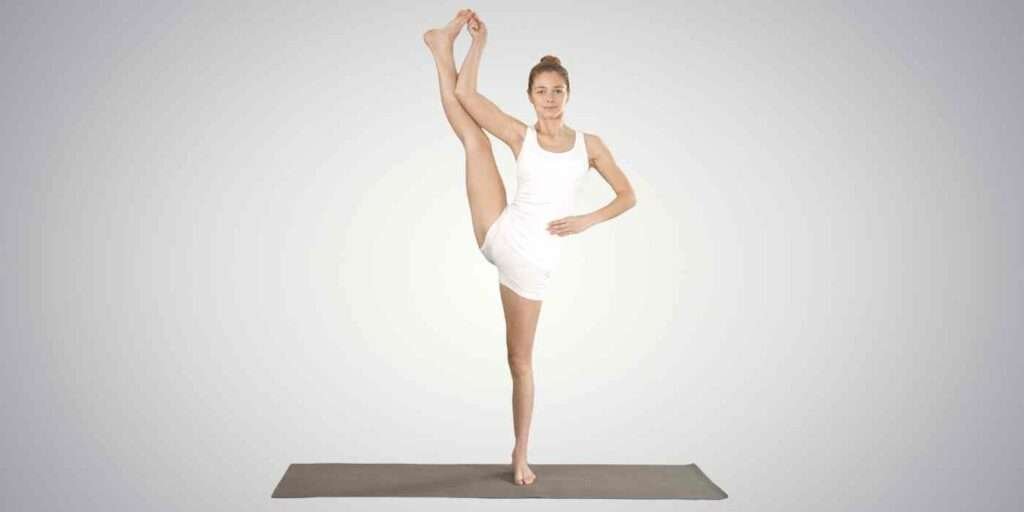
From Tree Pose, you lower yourself to sit on your heel while keeping balance. It strengthens your knees and helps you build mental focus and physical stillness.
13. Dead Body Pose (Savasana)

You lie flat on your back like you are asleep. This resting pose helps your body absorb all the hard work you have done so far and recharges your energy.
14. Wind-Removing Pose (Pavanamuktasana)
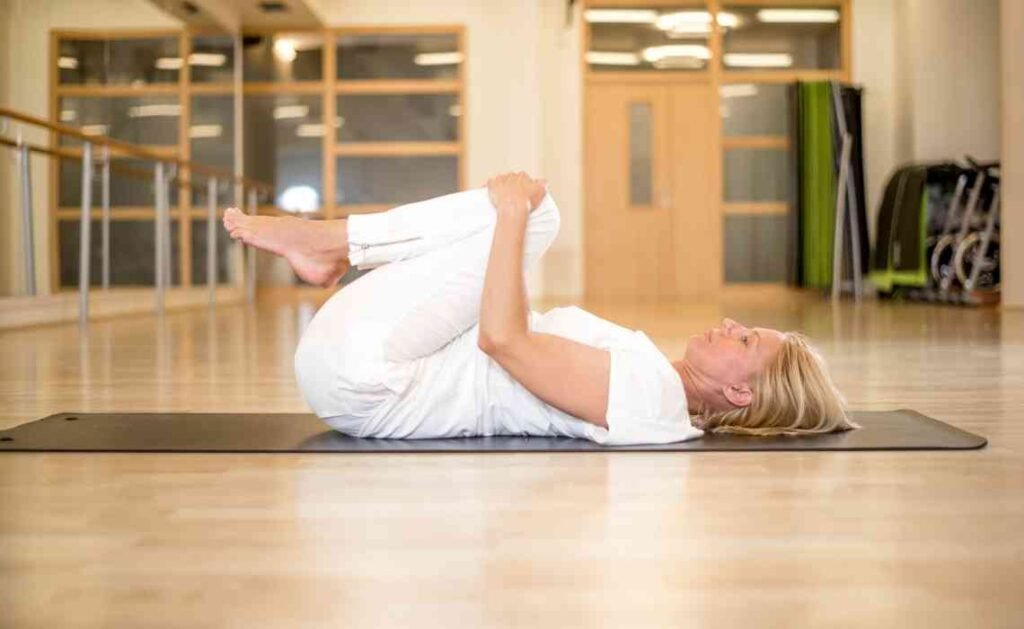
Lying on your back, you hug your knees to your chest. This pose helps remove gas from your stomach and improves digestion, making you feel lighter.
15. Sit-up
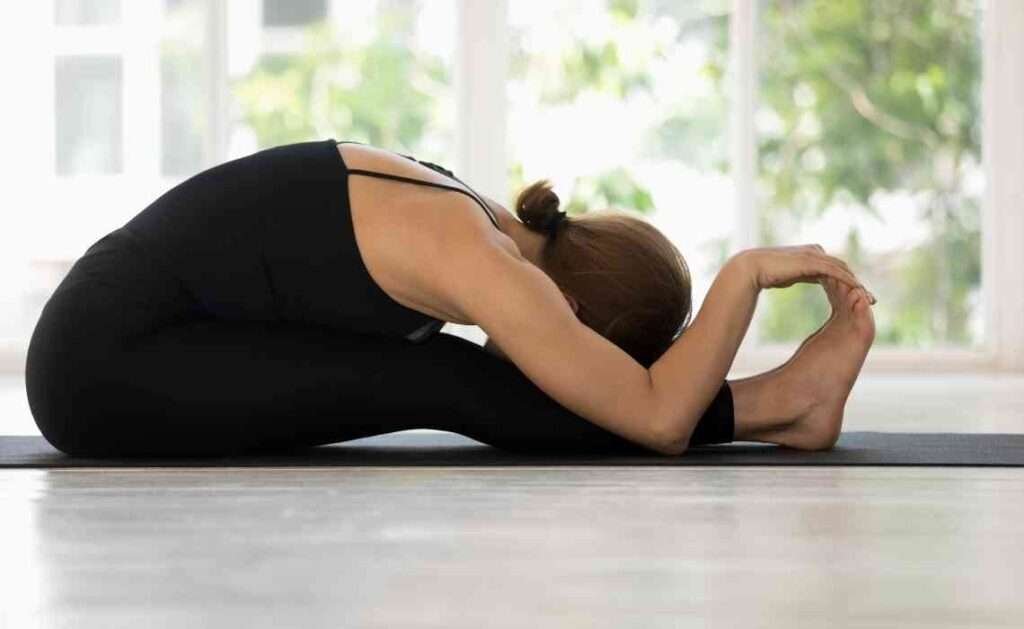
You perform a quick sit-up by clapping your hands over your head and reaching for your toes. This helps energize your body and strengthen your abdominal muscles.
16. Cobra Pose (Bhujangasana)
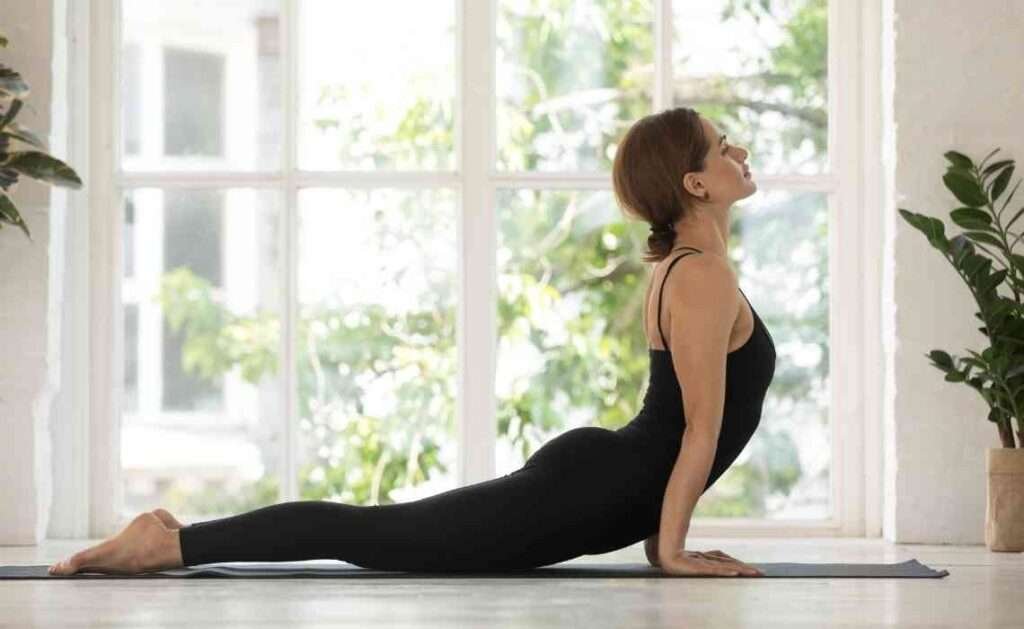
Lying on your stomach, you lift your chest using your arms. It strengthens your spine and opens up your chest and lungs, helping you breathe better.
17. Locust Pose (Salabhasana)
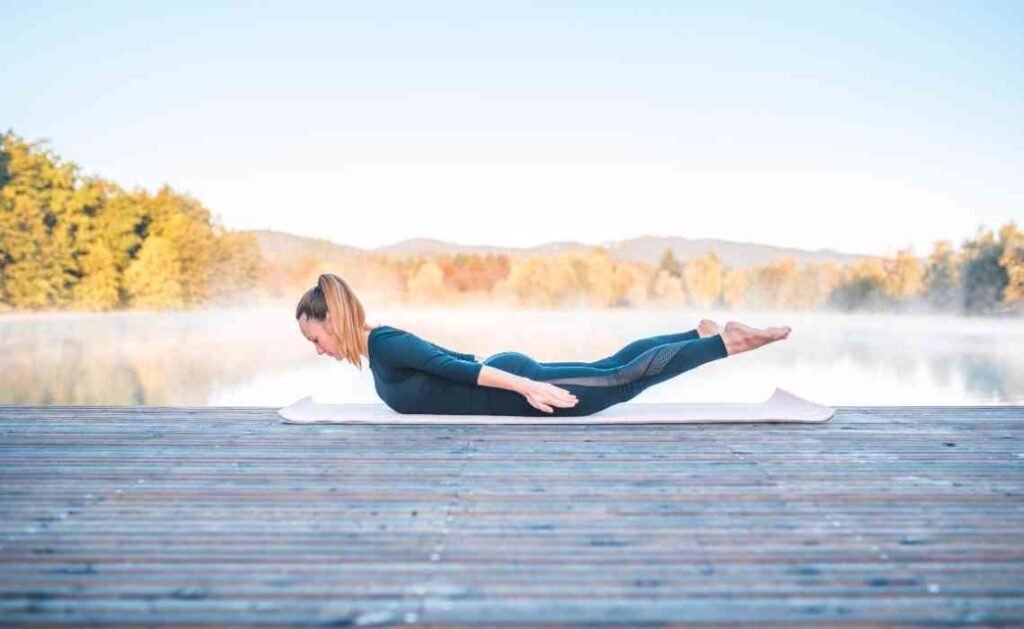
You lift your legs and arms off the ground while lying on your stomach. This pose strengthens your lower back, glutes, and arms.
18. Full Locust Pose (Poorna-Salabhasana)
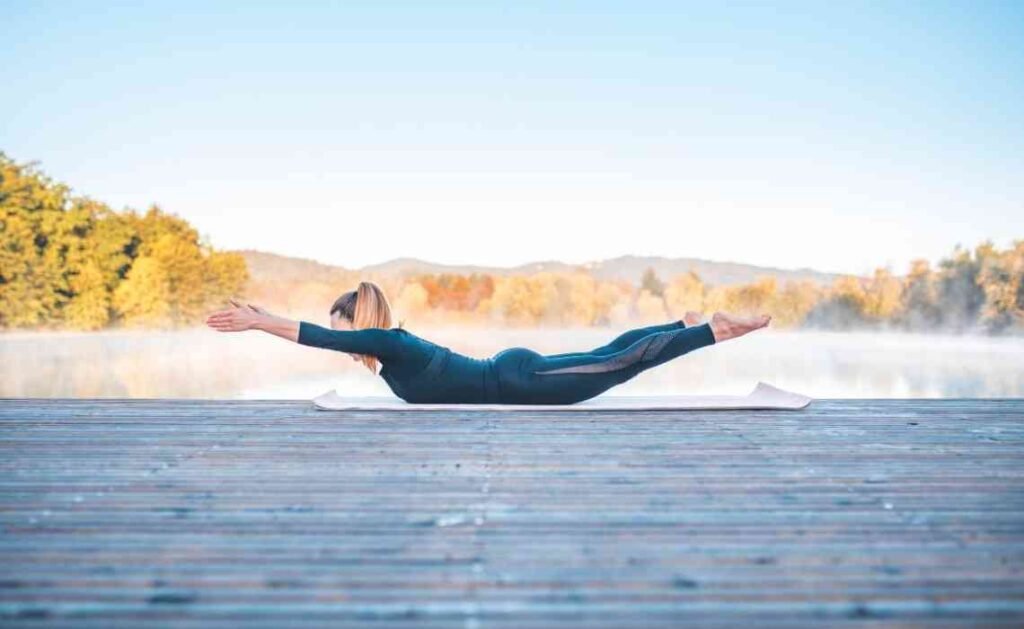
You lift your arms, legs, and chest high off the floor like Superman flying. It strengthens your entire back and improves flexibility in your spine.
19. Bow Pose (Dhanurasana)
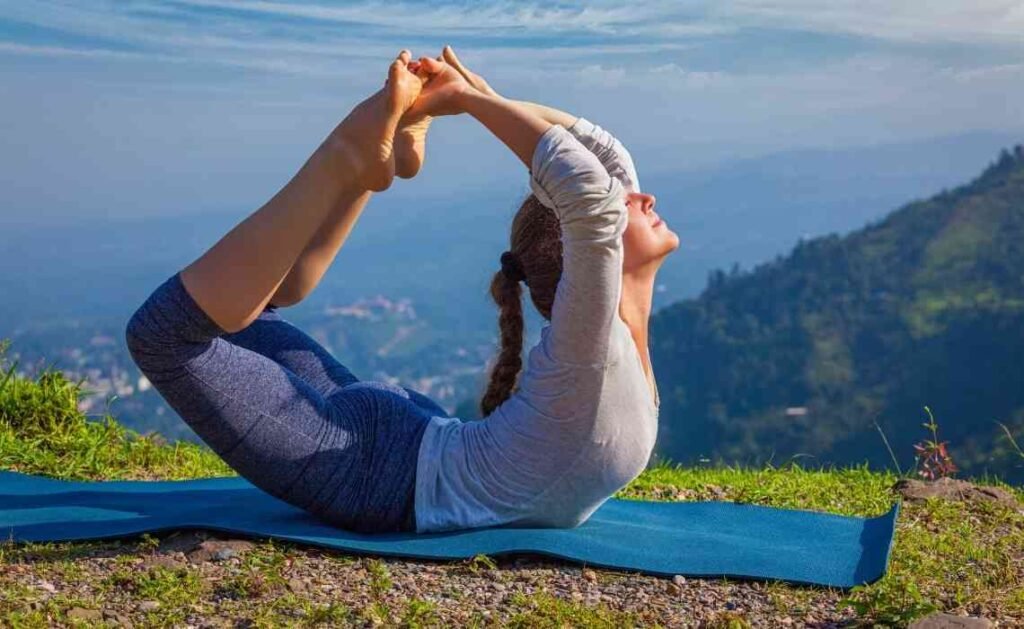
You grab your ankles behind you and lift your chest and legs. This pose opens your chest and strengthens your entire spine, helping to improve posture.
20. Fixed Firm Pose (Supta-Vajrasana)
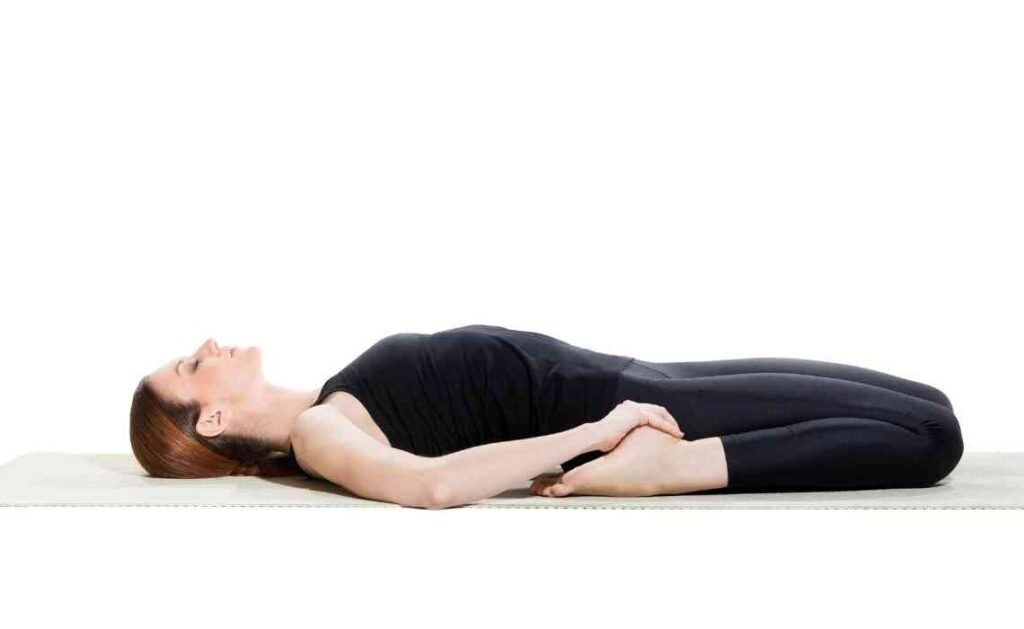
You sit on your heels, then lie back until your back touches the floor. It stretches your thighs, knees, and ankles, and is very good for joint health.
21. Half Tortoise Pose (Ardha-Kurmasana)
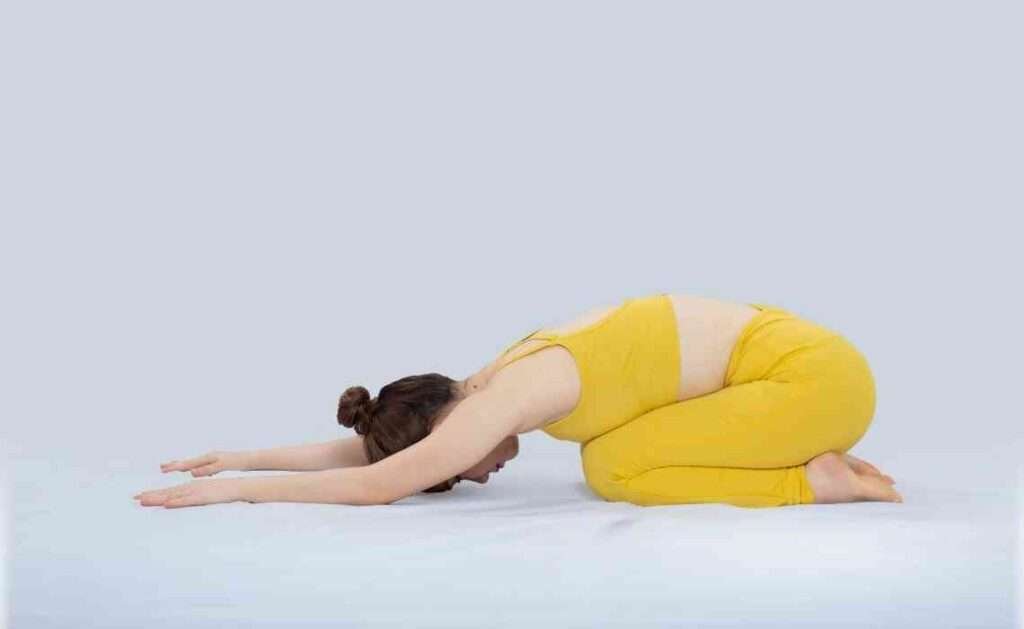
You sit on your knees, stretch your arms forward, and lower your forehead to the ground. It gives your heart a little break and helps calm your mind.
22. Camel Pose (Ustrasana)
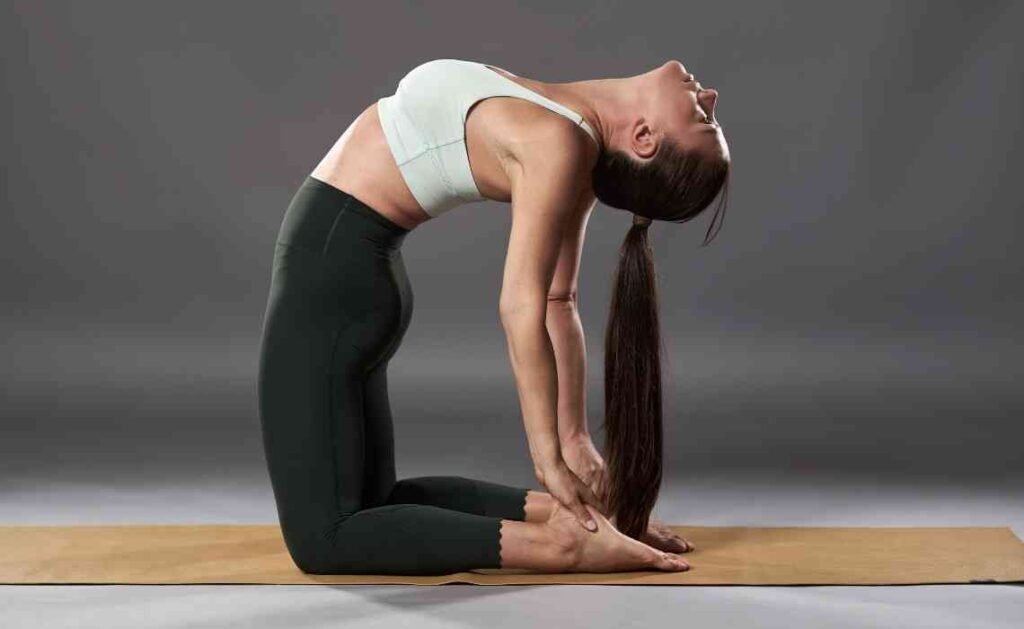
You kneel and bend backward, reaching for your heels. This big backbend stretches your chest, strengthens your back, and can even boost your mood by opening your heart area.
23. Rabbit Pose (Sasangasana)

You sit on your heels, grab your heels with your hands, and roll forward to touch your forehead to your knees. It gives a nice stretch to your spine and helps calm your nervous system.
24. Head to Knee Pose with Stretching Pose (Janushirasana with Paschimotthanasana)
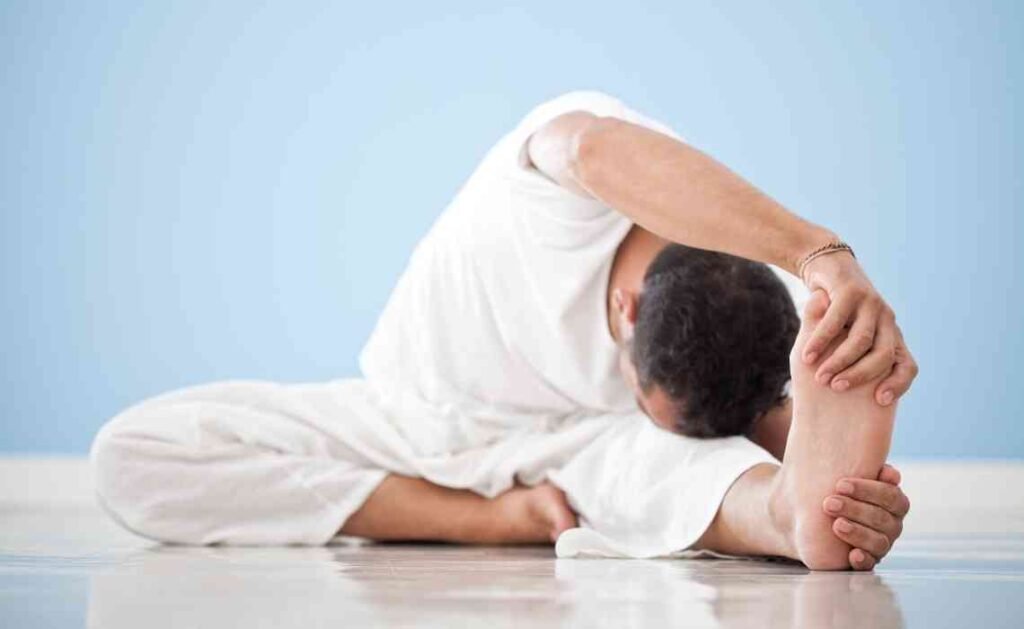
You stretch one leg out, bend forward, and reach for your foot. This pose helps stretch the spine and hamstrings while improving digestion and flexibility.
25. Spine Twisting Pose (Ardha-Matsyendrasana)
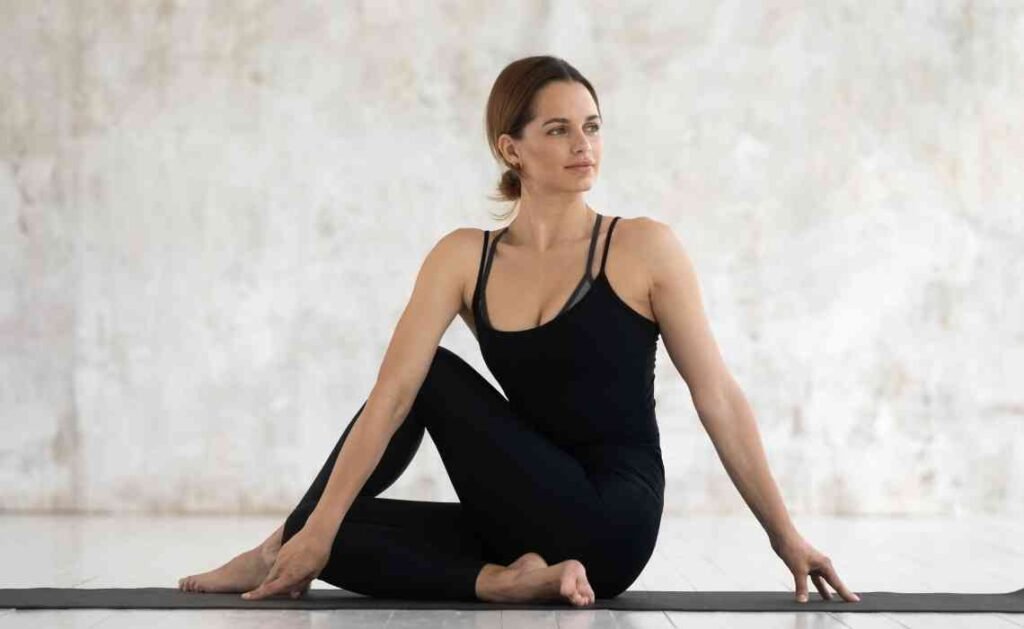
You sit with one leg crossed over the other and twist your spine. This twist massages your organs, helps digestion, and keeps your spine healthy and strong.
26. Blowing in Firm Pose (Kapalbhati in Vajrasana)
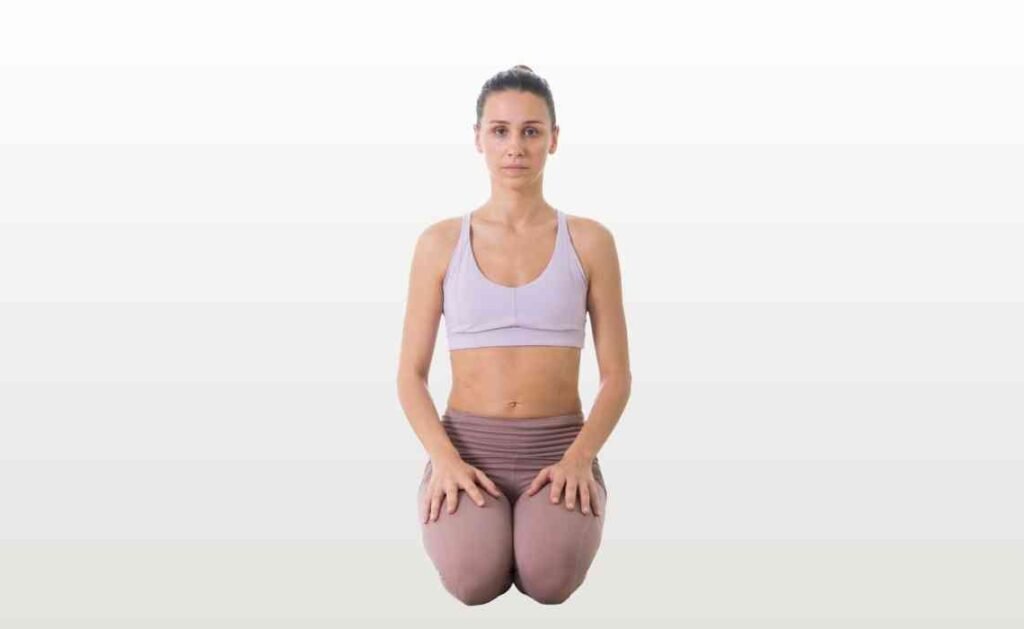
To finish the class, you sit on your knees and do fast breathing by pumping your stomach. It helps remove toxins from your lungs and leaves you feeling refreshed and energized.
Why Are These 26 Poses in Bikram Yoga Important?
These 26 poses in Bikram Yoga are carefully chosen to work together as a full-body workout. They stretch, strengthen, and tone every muscle in your body. They also help you balance your mind by teaching you patience, focus, and discipline.
Practicing Bikram Yoga regularly can improve your flexibility, help you lose weight, and reduce stress. The heated room makes you sweat a lot, which can help detox your body. It might feel challenging at first, but the more you practice, the stronger and more flexible you will become.
Bikram Yoga is like a moving meditation. Every time you focus on your breathing and try your best in each pose, you are training your mind to stay calm and strong, even when things get tough.
Tips for Beginners Starting Bikram Yoga
If you are new to Bikram Yoga, do not worry if you cannot do every pose perfectly. The most important thing is to try and stay in the room for the whole class.
Drink plenty of water before and after class because you will sweat a lot. Wear lightweight clothes and bring a towel for your mat. Listen to your body and rest if you need to, but always get back into the poses when you can.
Consistency is key. The more classes you attend, the more your body will adapt. Many people find that after just a few weeks, they feel more energized, sleep better, and are much more flexible.
Now that you know what the 26 yoga poses in Bikram Yoga are, you can appreciate how this practice covers everything your body needs: strength, flexibility, balance, and calmness. Each pose plays an important role in keeping you healthy and happy. Even if you do not master them right away, every small effort you make in class is a big step toward a healthier life.
Whether you are young or old, flexible or stiff, Bikram Yoga welcomes everyone. It challenges you to be your best, one pose at a time. So, roll out your mat, take a deep breath, and get ready to experience the magic of these 26 powerful poses!



